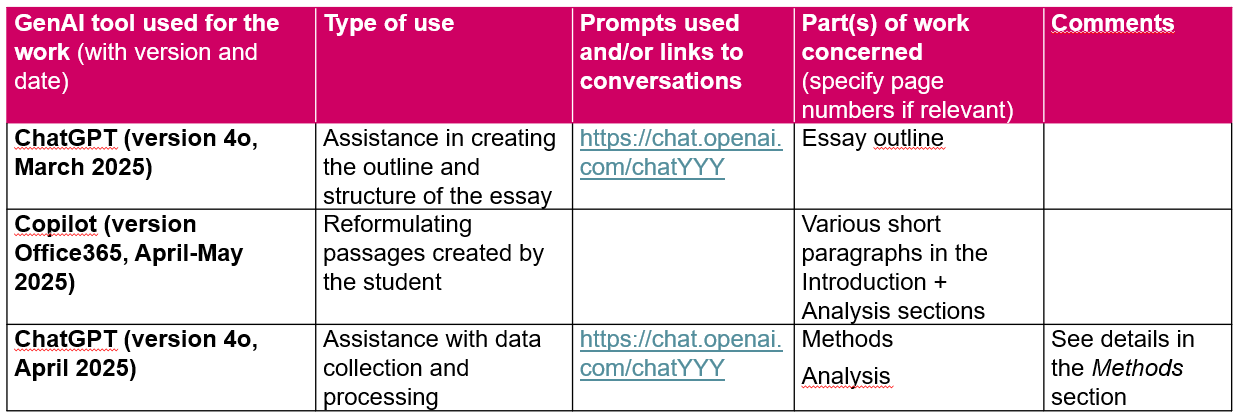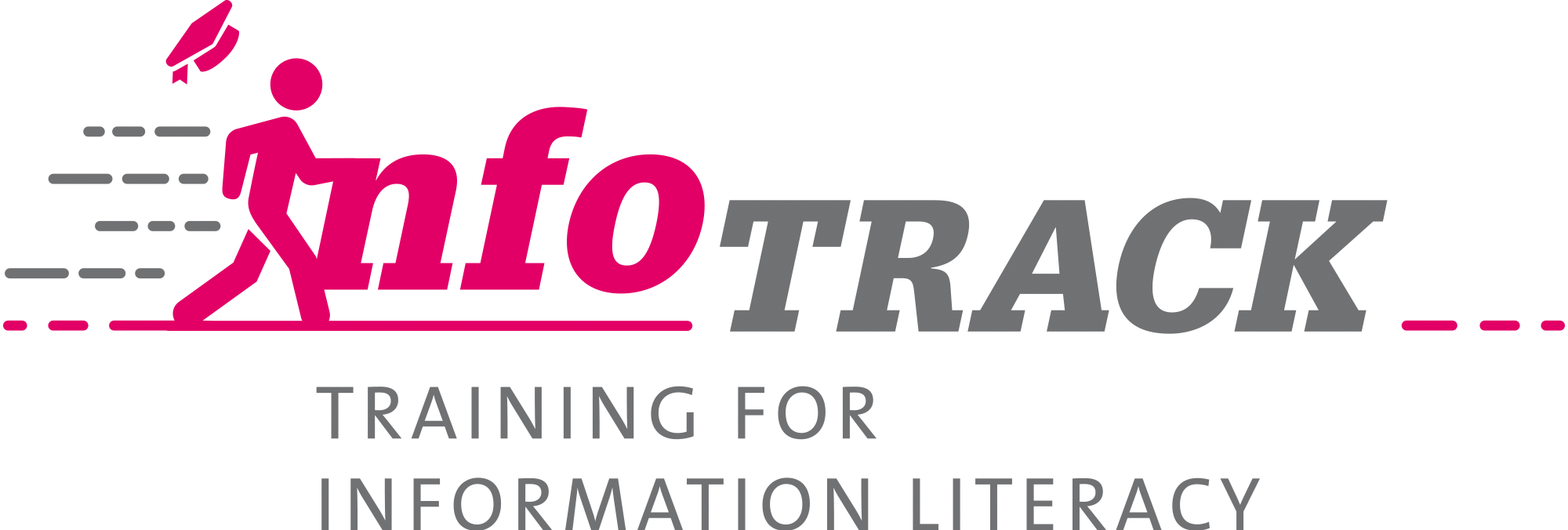- Respect the standards for referencing GenAI outputs
If you're using AI to generate text or images, you should acknowledge that in your paper, just like you would for the work of a human author, artist, or photographer. If using GenAI is allowed on an assignment your professor gives you, each time you include something AI-generated, you have to reference it. Always double-check the instructions given by the teaching staff on whether or not you are allowed to use GenAI as part of a course, and on any recommendations given for the referencing of GenAI.
GenAI can be used at various stages of academic work. The table below presents the most frequent use cases and, depending on the impact of AI on the final result, tells you whether referencing is required or only recommended:
| Copy and paste all or part of a GenAI output |
⇒ * Cite/credit the relevant excerpt (for text, between quotation marks) in accordance with the citation standard followed ⇒ Include the content of the conversation with the GenAI in an appendix ⇒ Specify, for example in a table, the use of GenAI |
|---|---|
| Paraphrase, reformulate or edit the output of a GenAI |
⇒ * Cite/credit the relevant excerpt in accordance with the citation standard followed ⇒ Include the content of the conversation with the GenAI in an appendix ⇒ Specify, for example in a table, the use of GenAI |
| Paraphrase, reformulate or edit the contents of several outputs of one or more GenAI and/or translate your text or a quotation |
⇒ * Cite/credit the relevant excerpt in accordance with the citation standard followed ⇒ Specify, for example in a table, the use of GenAI |
| Use a GenAI to generate the outline of the work and/or to get feedback on your text |
⇒ Specify, for example in a table, the use of GenAI |
| Use a GenAI to find ideas (before writing) and/or to find references and/or to translate a reading |
⇒ No credit required |
* = required
How to credit GenAI outputs
Sometimes, depending on the curriculum followed and the requirements of the teaching staff, you will not be allowed to consider GenAI outputs as sources and include them in the bibliography at the end of your document. In this case, you have other options to reference your use of GenAI:
- Insert a footnote after the relevant passage in the text, specifying the use of GenAI. For instance: “Passage reworded using ChatGPT, free version (see appendix 1 for details of the software and prompts used to write this work)”
If the use of the GenAI does not concern specific passages of text that can be easily identified, it is possible to mention the use of one or more GenAI:
- In the “Acknowledgements” section, for instance: “For the realization of this work, ChatGPT was used to reformulate the text in English and make it more fluid.”
- In the “Methods” section.
If neither of these two sections is included in this work, it is possible to integrate a dedicated chapter.
How to cite GenAI outputs
Depending on the curriculum followed and the requirements of the teaching staff, you may be required to follow a particular bibliographic style. The table to download summarizes the recommendations issued by the organizations responsible for the most common citation styles. It is always advisable to check in advance which style is required for a given assignment.
Other practical considerations for referencing GenAI
If you use several generative AI tools in different parts of your work, it may be useful to include a table summarizing all the tools used in your work or its appendices. Here is an example:

Readers should be able to consult a conversation with GenAI cited in the text. It is therefore recommended to copy into an appendix of your work any conversation with GenAI that is cited in the bibliography of your work.
![]()





